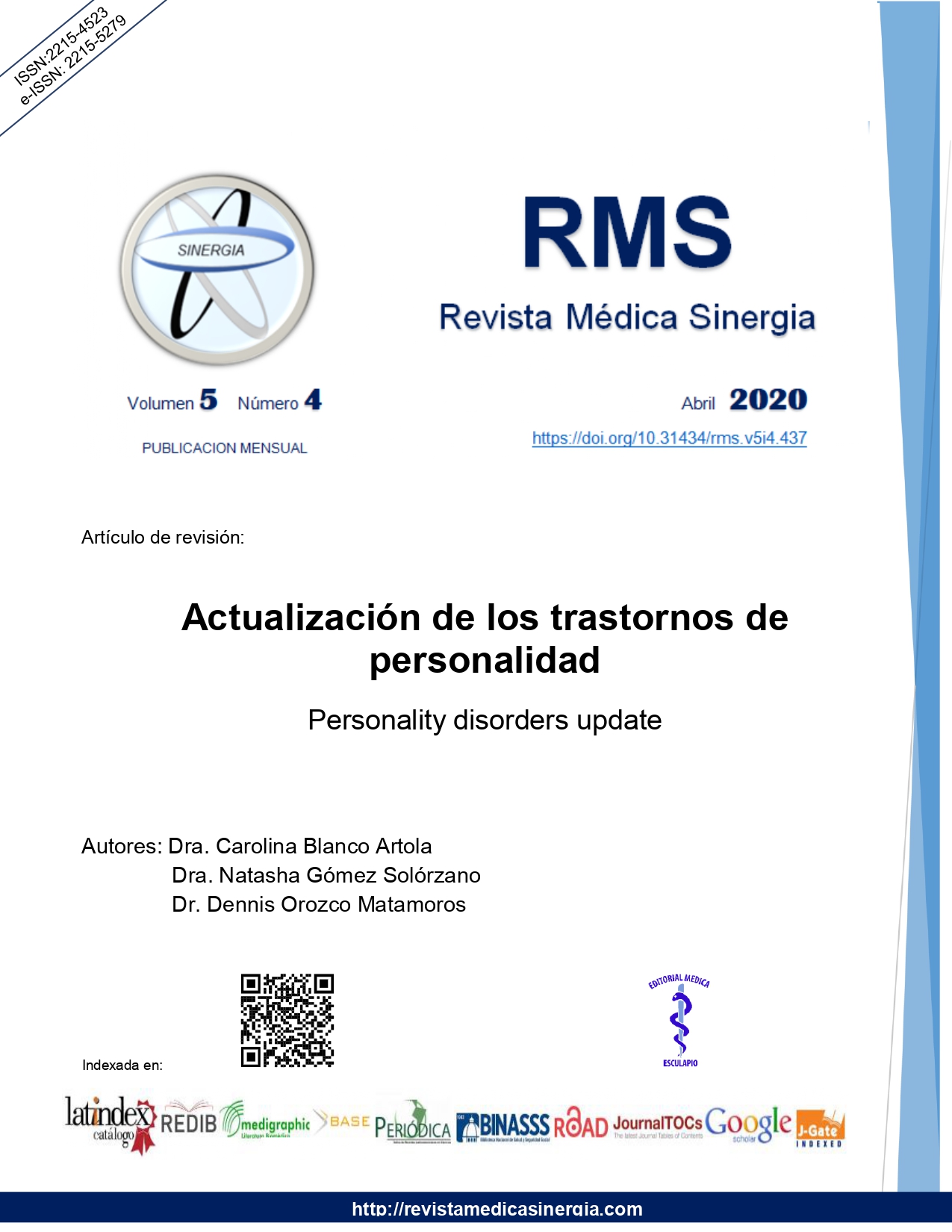Abstract
Personality disorders are among the most experienced psychiatric conditions; they begin in adolescence or in young adulthood. According to the Diagnostic and Statistical Manual of Mental Disorders in its fifth edition can be divided into three groups based on clinical similarities: group A (paranoid, schizoid and schizotypal), group B (antisocial, limit, histrionic and narcissistic), and group C (avoidant, dependent and obsessive-compulsive). It is diagnosed when long-term cultural deviations in cognition, emotions and behavior interrupt daily activities or cause distress. The initial management is based on cognitive behavioral therapy as its first line of treatment, being the second line the pharmacological treatment where medications for said specific disorder have not yet been approved, being used only to treat specific symptoms, that is, they are used as a complement.
Keywords
References
Sheehan L, Nieweglowski K, Corrigan P. The Stigma of Personality Disorders. Current Psychiatry Reports. 2016 01;18(1). https://doi.org/10.1007/s11920-015-0654-1
Bezerra-Filho S, Almeida A, Studart P, Rocha M, Lopes F, Miranda-Scippa Â. Personality disorders in euthymic bipolar patients: a systematic review. Revista Brasileira de Psiquiatria. 2015;37(2):162 https://doi.org/10.1590/1516-4446-2014-1459
Tyrer P, Reed G, Crawford M. Classification, assessment, prevalence, and effect of personality disorder. The Lancet. 2015;385(9969):717. https://doi.org/10.1016/S0140-6736(14)61995-4
Schulte Holthausen B, Habel U. Sex Differences in Personality Disorders. Current Psychiatry Reports. 2018;20(12):106-107. https://doi.org/10.1007/s11920-018-0975-y
Sharp C, Wright A. Editorial overview: Personality disorders: Personality pathology is what personality pathologists do. Current Opinion in Psychology. 2018;21:iv-vii. https://doi.org/10.1016/j.copsyc.2018.05.008
Bulbena-Cabre A, Bassir Nia A, Perez-Rodriguez M. Current Knowledge on Gene-Environment Interactions in Personality Disorders: an Update. Current Psychiatry Reports. 2018;20(9). https://doi.org/10.1007/s11920-018-0934-7
Newlin E, Weinstein B. Personality Disorders. CONTINUUM: Lifelong Learning in Neurology. 2015;21:806-817. https://doi.org/10.1212/01.CON.0000466668.02477.0c
Riddle M, Meeks T, Alvarez C, Dubovsky A. When personality is the problem: Managing patients with difficult personalities on the acute care unit. Journal of Hospital Medicine. 2016;11(12):1-6. https://doi.org/10.1002/jhm.2643
Ekselius L. Personality disorder: a disease in disguise. Upsala Journal of Medical Sciences. 2018;123(4):1-12.https://doi.org/10.1080/03009734.2018.1526235
Millon T. What Is a Personality Disorder?. Journal of Personality Disorders. 2016;30(3):289-306. https://doi.org/10.1521/pedi.2016.30.3.289
Black D. The Natural History of Antisocial Personality Disorder. The Canadian Journal of Psychiatry. 2015;60(7):309-314. https://doi.org/10.1177/070674371506000703
Levy K, McMain S, Bateman A, Clouthier T. Treatment of Borderline Personality Disorder. Psychiatric Clinics of North America. 2018;41(4):711-728. https://doi.org/10.1016/j.psc.2018.07.011
Caligor E, Levy K, Yeomans F. Narcissistic Personality Disorder: Diagnostic and Clinical Challenges. American Journal of Psychiatry. 2015;172(5):415-422. https://doi.org/10.1176/appi.ajp.2014.14060723
Weinbrecht A, Schulze L, Boettcher J, Renneberg B. Avoidant Personality Disorder: a Current Review. Current Psychiatry Reports. 2016;18(3):1-8. https://doi.org/10.1007/s11920-016-0665-6
Caspar F. Studying Effects and Process in Psychotherapy for Personality Disorders. Psychopathology. 2018;51(2):1-8. https://doi.org/10.1159/000487895


